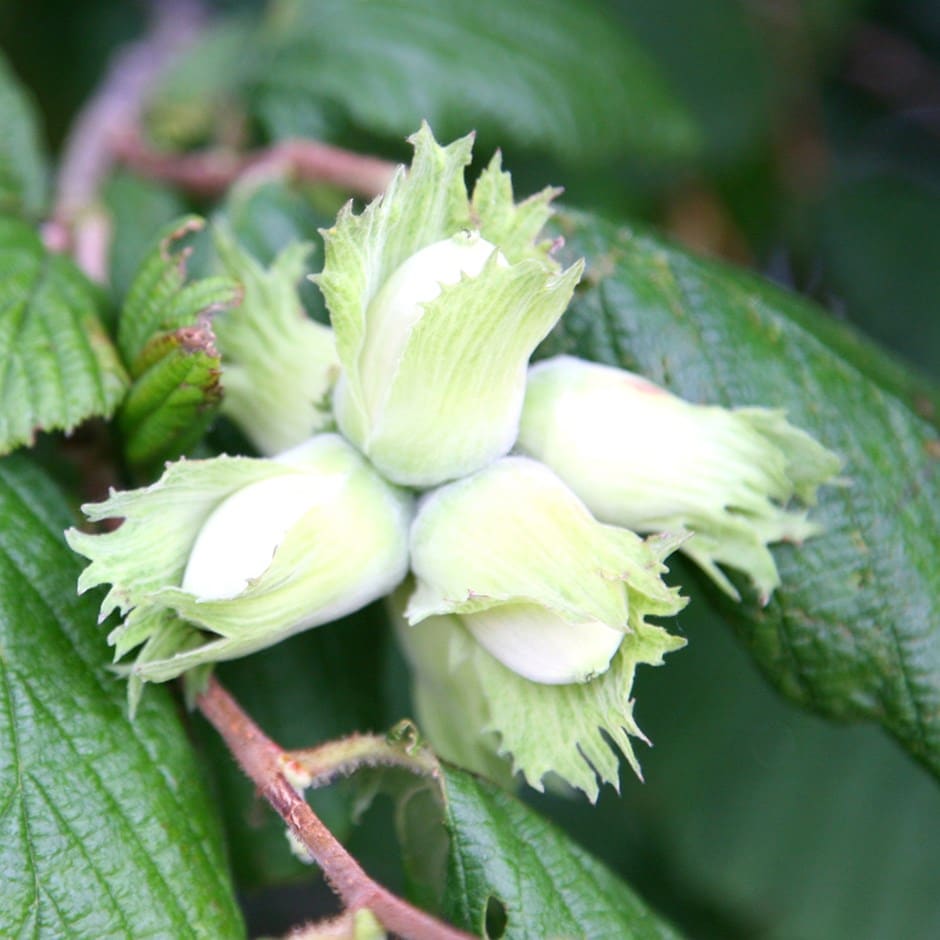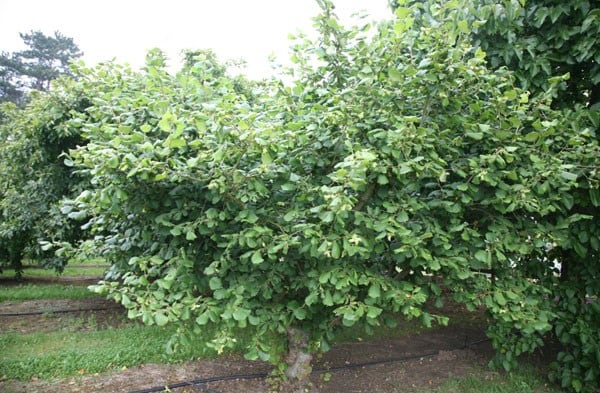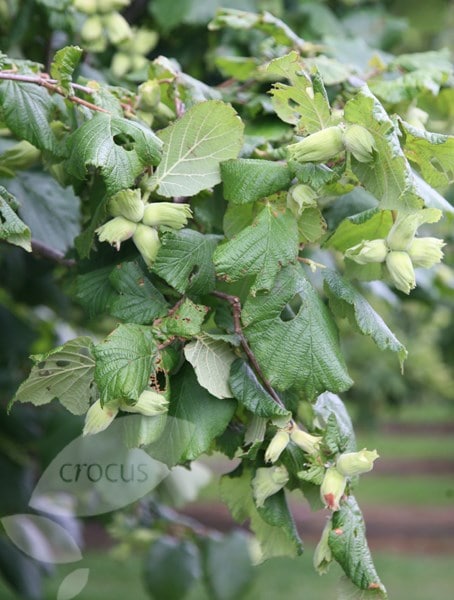Eventual height & spread
cobnut 'Kentish Cob'
cobnut / filbert ( syn. Corylus maxima 'Lambert's Filbert' )
- 9 litre pot | 1.2 - 1.5m tall
- £69.99
- In stock (shipped within 3-5 working days)
- bare root | 1.2m tall
- £34.99
- available to order from autumn
Delivery options
- Standard £12.99
- Position: full sun or partial shade
- Soil: moist, well-drained soil
- Rate of growth: average
- Flowering period: February to March
- Hardiness: fully hardy
A self-fertile hazelnut, 'Kentish Cob' is widely considered to be the superior UK variety and easiest to grow in the garden. This attractive, tree-like shrub produces a mass of yellow-green catkins in the early spring followed by mid-green, heart-shaped leaves. A heavy crop of cobnuts from September occurs where there is enough sun and shelter to ripen the delicious, edible nuts.
When planting cobnut or filbert, improve the soil with well-rotted compost or a soil conditioner and add mycorrhizal fungi to encourage strong root establishment. Support taller young plants with a cane or stake until they are established, and water generously around the base, especially in the first season.
Bare-root plants should be planted out as soon as they arrive. If this is not possible, they can be heeled in temporarily (covering their roots with soil) or potted up. Before planting, soak the rootball in a bucket of water for half an hour and make sure to incorporate lots of well-rotted garden compost in the planting hole.
These trees crop reliably on chalky soils and are best trained as a goblet-shaped bush for good fruiting. Keep a 60cm (2ft) radius around the base clear of weeds or grass, and apply a 5-7cm (2-3in) mulch of well-rotted organic matter each spring to conserve moisture and feed the soil.
Prune in March by removing dead, diseased or damaged wood, and thin out overcrowded stems if needed to maintain the open goblet framework. Light summer pruning can also help check vigorous growth and encourage nut production. For the best harvest, plant more than one cultivar nearby to ensure cross-pollination, as this greatly improves both yield and nut size.
Protect developing nuts from squirrels, who can strip trees before they are ready, by netting individual branches, using tree guards, or harvesting early once the husks begin to loosen.
Bare-root plants should be planted out as soon as they arrive. If this is not possible, they can be heeled in temporarily (covering their roots with soil) or potted up. Before planting, soak the rootball in a bucket of water for half an hour and make sure to incorporate lots of well-rotted garden compost in the planting hole.
These trees crop reliably on chalky soils and are best trained as a goblet-shaped bush for good fruiting. Keep a 60cm (2ft) radius around the base clear of weeds or grass, and apply a 5-7cm (2-3in) mulch of well-rotted organic matter each spring to conserve moisture and feed the soil.
Prune in March by removing dead, diseased or damaged wood, and thin out overcrowded stems if needed to maintain the open goblet framework. Light summer pruning can also help check vigorous growth and encourage nut production. For the best harvest, plant more than one cultivar nearby to ensure cross-pollination, as this greatly improves both yield and nut size.
Protect developing nuts from squirrels, who can strip trees before they are ready, by netting individual branches, using tree guards, or harvesting early once the husks begin to loosen.


